In the past, low-range voltage wire and cable made of aluminum were widely used for house wiring. After a while, people learned how troublesome these cables can be. Why were these cables even installed in the first place and why are these cables troublesome will be answered in the following context. The term “aluminum building wire” refers to a specific kind of electrical wiring that is used in residential buildings or homes and that makes use of electrical conductors made of aluminum. Aluminum has a higher conductivity-to-weight ratio than copper does, and as a result, it is utilized in the wiring of power grids, such as overhead power transmission lines and local power distribution lines. It is also used in the electrical wiring of some airplanes. Aluminum wire has been utilized by utility companies for the purpose of electrical transmission in power grids since somewhere between the late 1800s and the early 1900s. Copper wires can’t compete with it when it comes to price or weight. Aluminum wire continues to be the material of choice for applications involving the transmission and distribution of electrical power. For a brief period of time during the 1960s and 1970s, aluminum wire was substituted for copper wire in home construction across North America. This switch occurred during a time when copper costs were relatively high. At the time, electrical devices (outlets, switches, lighting, fans, etc.) were not designed with the specific properties of the aluminum wire that was being used in mind. Additionally, there were some issues related to the properties of the wire itself, which caused the installations with aluminum wire to be significantly more prone to experiencing issues. In order to lessen the severity of the issues, updated production standards have been devised for both the wire and the devices. A potential risk of fire exists in preexisting homes that have aluminum wiring of an older generation installed in branch circuits.  What is Aluminum Wiring? Aluminum wire has been put to use as an electrical conductor for a significant amount of time, particularly by electrical utilities related to power transmission lines that were put into use not long after the beginning of the construction of modern power distribution systems in the late 1880s. These lines were put into use shortly after the beginning of the use of aluminum wire as an electrical conductor. Copper wire must have a bigger wire gauge in order to carry the same amount of current as aluminum wire does, yet aluminum wire is still less expensive than copper wire for a specific application. Aluminum has a density that is only 30.5% of that of copper, but aluminum alloys that are used for electrical conductors are only approximately 61% as conductive as copper of the same cross-section size. As a result, the amount of current that can be carried by one pound of aluminum is equivalent to that of two pounds of copper. Due to the fact that the price of copper is approximately three times that of aluminum by weight (approximately USD $3/lb vs. USD $1/lb as of 2017), the price of aluminum wires with the same conductivity as copper wires is one-sixth the price of copper wire. The lighter weight of aluminum wires in particular makes these electrical conductors well suited for use in power distribution systems by electrical utilities. This is because supporting towers or structures only need to support half the weight of wires to carry the same current as they would with heavier wires.
What is Aluminum Wiring? Aluminum wire has been put to use as an electrical conductor for a significant amount of time, particularly by electrical utilities related to power transmission lines that were put into use not long after the beginning of the construction of modern power distribution systems in the late 1880s. These lines were put into use shortly after the beginning of the use of aluminum wire as an electrical conductor. Copper wire must have a bigger wire gauge in order to carry the same amount of current as aluminum wire does, yet aluminum wire is still less expensive than copper wire for a specific application. Aluminum has a density that is only 30.5% of that of copper, but aluminum alloys that are used for electrical conductors are only approximately 61% as conductive as copper of the same cross-section size. As a result, the amount of current that can be carried by one pound of aluminum is equivalent to that of two pounds of copper. Due to the fact that the price of copper is approximately three times that of aluminum by weight (approximately USD $3/lb vs. USD $1/lb as of 2017), the price of aluminum wires with the same conductivity as copper wires is one-sixth the price of copper wire. The lighter weight of aluminum wires in particular makes these electrical conductors well suited for use in power distribution systems by electrical utilities. This is because supporting towers or structures only need to support half the weight of wires to carry the same current as they would with heavier wires.  When there was a housing construction boom in North America in the early 1960s and the price of copper spiked, aluminum structure wire was manufactured using utility grade AA-1350 aluminum alloy in sizes small sufficient to be used for lower load branch circuits in homes. This was done during the same time period. In the late 1960s, issues and failures that were related to branch circuit connections for building wire that was made with the utility grade AA-1350 alloy aluminum started to surface. As a result, there was a reevaluation of the use of that alloy for building wire, and it was determined that there was a need for newer alloys to produce aluminum building wire. Complications Associated with Aluminum Wiring When utility grade AA-1350 alloy aluminum wire was initially utilized in branch circuit wiring in the early 1960s, solid aluminum wire was fitted the same way as copper wire using the same electrical equipment. This was done in order to ensure that there was no disruption in electrical service. Typical connections of an electrical wire to an electrical device are typically made by wrapping the wire around a screw on the device, which is also called a terminal, and then tightening the screw. This method is typically utilized for branch circuits with solid wires that are smaller, such as 15-A or 20-A circuits. Around the same period, the use of steel screws, as opposed to brass screws, became more prevalent in the construction of electrical gadgets. Because of improper connection methods, dissimilar metals’ different resistances, and significantly different coefficients of thermal expansion, as well as issues with the properties of the solid wires, many of these terminations with solid aluminum wire began to fail over the course of time.
When there was a housing construction boom in North America in the early 1960s and the price of copper spiked, aluminum structure wire was manufactured using utility grade AA-1350 aluminum alloy in sizes small sufficient to be used for lower load branch circuits in homes. This was done during the same time period. In the late 1960s, issues and failures that were related to branch circuit connections for building wire that was made with the utility grade AA-1350 alloy aluminum started to surface. As a result, there was a reevaluation of the use of that alloy for building wire, and it was determined that there was a need for newer alloys to produce aluminum building wire. Complications Associated with Aluminum Wiring When utility grade AA-1350 alloy aluminum wire was initially utilized in branch circuit wiring in the early 1960s, solid aluminum wire was fitted the same way as copper wire using the same electrical equipment. This was done in order to ensure that there was no disruption in electrical service. Typical connections of an electrical wire to an electrical device are typically made by wrapping the wire around a screw on the device, which is also called a terminal, and then tightening the screw. This method is typically utilized for branch circuits with solid wires that are smaller, such as 15-A or 20-A circuits. Around the same period, the use of steel screws, as opposed to brass screws, became more prevalent in the construction of electrical gadgets. Because of improper connection methods, dissimilar metals’ different resistances, and significantly different coefficients of thermal expansion, as well as issues with the properties of the solid wires, many of these terminations with solid aluminum wire began to fail over the course of time. 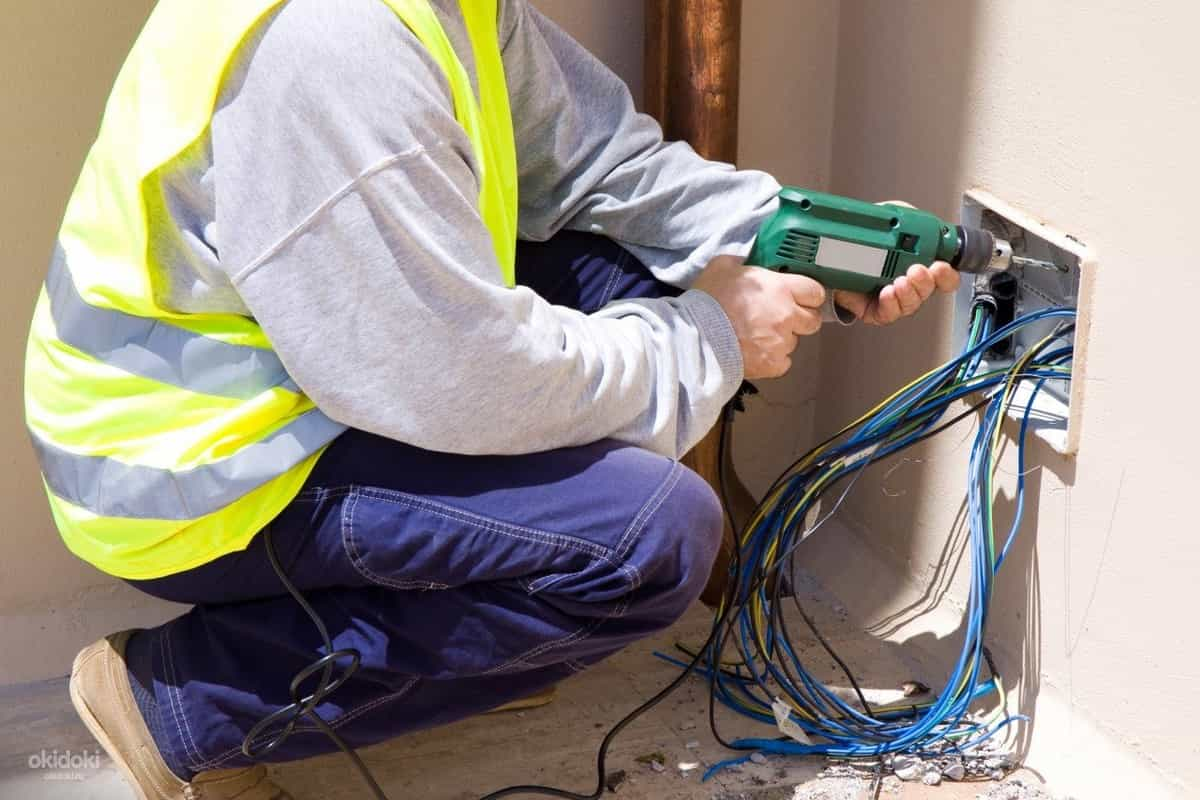 This was due to the fact that the solid wires had issues with their properties. Overheated connections were the direct result of these connection failures, which were caused by heat generated by the electrical load. Improper installations A good number of the aluminum wire terminations that were placed in the 1960s and 1970s continue to function without any issues because they were installed correctly. Nevertheless, complications may arise in the future, particularly if the connections were not initially placed in an appropriate manner. Incorrect installation, also known as poor workmanship, can be identified by the following issues: failing to abrade the wires, failing to apply a corrosion inhibitor, failing to wrap wires around terminal screws, wrapping wires around terminal screws in the incorrect direction, and failing to apply adequate torque to the connection screws. Incorrectly tightening the connecting screw with an excessive amount of force can also result in issues since it causes the wire to become damaged. This is especially true for the more malleable aluminum wire. The ratio of the coefficients of creep and expansion The majority of the issues that arise with aluminum wire are typically related to older (pre-1972) AA-1350 alloy solid aluminum wire. This type of aluminum wiring is sometimes referred to as “old technology” aluminum wiring.
This was due to the fact that the solid wires had issues with their properties. Overheated connections were the direct result of these connection failures, which were caused by heat generated by the electrical load. Improper installations A good number of the aluminum wire terminations that were placed in the 1960s and 1970s continue to function without any issues because they were installed correctly. Nevertheless, complications may arise in the future, particularly if the connections were not initially placed in an appropriate manner. Incorrect installation, also known as poor workmanship, can be identified by the following issues: failing to abrade the wires, failing to apply a corrosion inhibitor, failing to wrap wires around terminal screws, wrapping wires around terminal screws in the incorrect direction, and failing to apply adequate torque to the connection screws. Incorrectly tightening the connecting screw with an excessive amount of force can also result in issues since it causes the wire to become damaged. This is especially true for the more malleable aluminum wire. The ratio of the coefficients of creep and expansion The majority of the issues that arise with aluminum wire are typically related to older (pre-1972) AA-1350 alloy solid aluminum wire. This type of aluminum wiring is sometimes referred to as “old technology” aluminum wiring.  This is due to the fact that the properties of this wire result in significantly more expansion and contraction than copper wire or contemporary AA-8000 series aluminum wire. An older type of solid aluminum wire had certain issues due to a feature known as creep, which caused the wire to permanently deform or relax over the course of time while it was being loaded. Before the middle of the 1970s, aluminum wire had a slightly higher rate of creep, but a more significant issue was that aluminum wire critically had a coefficient of expansion that differed significantly from steel screws, which were commonly used in place of brass screws at this time for terminations at devices such as outlets and switches. This was a problem because aluminum wire was critical because it had a coefficient of expansion that differed significantly from steel screws. Due to the fact that aluminum and steel expand and contract at significantly different rates when subjected to thermal load, a connection may become loose over time. This is especially true for older terminations that were initially installed with inadequate torque on the screws, which, when combined with the creep of the aluminum, caused the connection to be installed incorrectly. Over time, loose connections will become increasingly difficult to secure. This cycle happens because the connection becomes slightly less secure over time, which results in a smaller contact area at the connection itself. This causes the connection to overheat, which in turn makes it possible for intermetallic steel-aluminum compounds to form between the conductor and the terminal screw. Because of this, the resistance at the junction was increased, which caused further heating to occur. Studies have proven that oxidation was not a significant factor in these cases, despite the fact that many people thought that oxidation was the problem. Concerns regarding the ratings of electrical devices The majority of electrical devices that were in use in the 1960s had smaller terminal screws made of plain steel, which meant that attaching the aluminum wires that were in use at the time to these devices was considerably more prone to causing difficulties.
This is due to the fact that the properties of this wire result in significantly more expansion and contraction than copper wire or contemporary AA-8000 series aluminum wire. An older type of solid aluminum wire had certain issues due to a feature known as creep, which caused the wire to permanently deform or relax over the course of time while it was being loaded. Before the middle of the 1970s, aluminum wire had a slightly higher rate of creep, but a more significant issue was that aluminum wire critically had a coefficient of expansion that differed significantly from steel screws, which were commonly used in place of brass screws at this time for terminations at devices such as outlets and switches. This was a problem because aluminum wire was critical because it had a coefficient of expansion that differed significantly from steel screws. Due to the fact that aluminum and steel expand and contract at significantly different rates when subjected to thermal load, a connection may become loose over time. This is especially true for older terminations that were initially installed with inadequate torque on the screws, which, when combined with the creep of the aluminum, caused the connection to be installed incorrectly. Over time, loose connections will become increasingly difficult to secure. This cycle happens because the connection becomes slightly less secure over time, which results in a smaller contact area at the connection itself. This causes the connection to overheat, which in turn makes it possible for intermetallic steel-aluminum compounds to form between the conductor and the terminal screw. Because of this, the resistance at the junction was increased, which caused further heating to occur. Studies have proven that oxidation was not a significant factor in these cases, despite the fact that many people thought that oxidation was the problem. Concerns regarding the ratings of electrical devices The majority of electrical devices that were in use in the 1960s had smaller terminal screws made of plain steel, which meant that attaching the aluminum wires that were in use at the time to these devices was considerably more prone to causing difficulties.  Late in the 1960s, a device specification that came to be known as CU/AL (which stood for copper-aluminum) was developed. This specification laid out the standards for devices that were designed to be used with aluminum wire. Some of these devices utilized larger screw terminals with undercuts so that the wire could be held in place with more stability. Unfortunately, CU/AL switches and receptacles did not operate adequately with aluminum wire, which led to the development of a new specification known as CO/ALR (which stands for copper-aluminum, revised). These devices make use of brass screw terminals, which are engineered to behave in a manner analogous to that of aluminum and to grow at a rate analogous to that of aluminum; additionally, the screws feature undercuts that are even deeper. Only standard light switches and receptacles have the CO/ALR rating available; the CU/AL marking is the standard connection designation for circuit breakers and bigger pieces of equipment. Aluminum oxidation When exposed to air, the vast majority of metals spontaneously oxidize, with a few notable exceptions like gold. Aluminum oxide is not a conductor of electricity; rather, it acts as an insulator of electrical current. As a direct result of this, the flow of electrons through the oxide layer can be significantly slowed down. On the other hand, due to the fact that the oxide layer is only a few nanometers thick, the additional resistance is not detectable under the majority of situations. When an aluminum wire is terminated correctly, the thin, brittle layer of oxide on the wire is broken by the mechanical connection, resulting in a great electrical connection. There is no way for more oxide to be formed if oxygen is unable to permeate the connecting site since this connection must be loosened first. Inadequate connection of the aluminum wire can occur if either insufficient force is given to the electrical device termination screw or the devices themselves are not CO/ALR qualified (or at least CU/AL rated for breakers and larger equipment).
Late in the 1960s, a device specification that came to be known as CU/AL (which stood for copper-aluminum) was developed. This specification laid out the standards for devices that were designed to be used with aluminum wire. Some of these devices utilized larger screw terminals with undercuts so that the wire could be held in place with more stability. Unfortunately, CU/AL switches and receptacles did not operate adequately with aluminum wire, which led to the development of a new specification known as CO/ALR (which stands for copper-aluminum, revised). These devices make use of brass screw terminals, which are engineered to behave in a manner analogous to that of aluminum and to grow at a rate analogous to that of aluminum; additionally, the screws feature undercuts that are even deeper. Only standard light switches and receptacles have the CO/ALR rating available; the CU/AL marking is the standard connection designation for circuit breakers and bigger pieces of equipment. Aluminum oxidation When exposed to air, the vast majority of metals spontaneously oxidize, with a few notable exceptions like gold. Aluminum oxide is not a conductor of electricity; rather, it acts as an insulator of electrical current. As a direct result of this, the flow of electrons through the oxide layer can be significantly slowed down. On the other hand, due to the fact that the oxide layer is only a few nanometers thick, the additional resistance is not detectable under the majority of situations. When an aluminum wire is terminated correctly, the thin, brittle layer of oxide on the wire is broken by the mechanical connection, resulting in a great electrical connection. There is no way for more oxide to be formed if oxygen is unable to permeate the connecting site since this connection must be loosened first. Inadequate connection of the aluminum wire can occur if either insufficient force is given to the electrical device termination screw or the devices themselves are not CO/ALR qualified (or at least CU/AL rated for breakers and larger equipment). 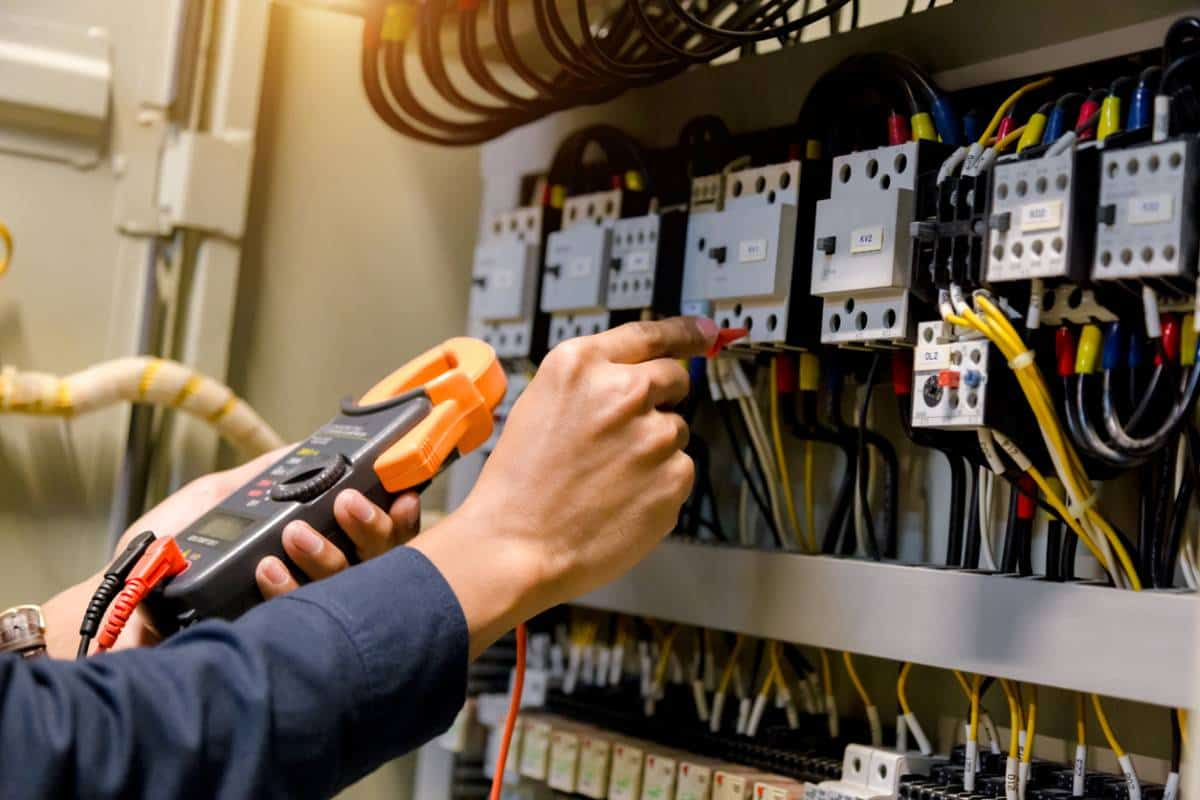 ca Additionally, because of the vast disparity in the thermal expansion rates of older aluminum wire and steel termination screws, connections have a tendency to become looser with time, which in turn permits the production of some extra oxide on the wire. On the other hand, it was discovered that oxidation does not have a significant role in the failures of aluminum wire terminations. The connecting of aluminum wire to copper wire is another problem that can arise. In addition to the oxidation that happens on the surface of aluminum wires, which can cause a poor connection, aluminum and copper are metals that are very different from one another. As a consequence of this, galvanic corrosion may take place in the presence of an electrolyte, and the stability of these connections may diminish with the passage of time.
ca Additionally, because of the vast disparity in the thermal expansion rates of older aluminum wire and steel termination screws, connections have a tendency to become looser with time, which in turn permits the production of some extra oxide on the wire. On the other hand, it was discovered that oxidation does not have a significant role in the failures of aluminum wire terminations. The connecting of aluminum wire to copper wire is another problem that can arise. In addition to the oxidation that happens on the surface of aluminum wires, which can cause a poor connection, aluminum and copper are metals that are very different from one another. As a consequence of this, galvanic corrosion may take place in the presence of an electrolyte, and the stability of these connections may diminish with the passage of time.
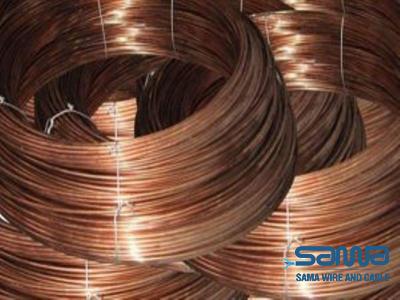
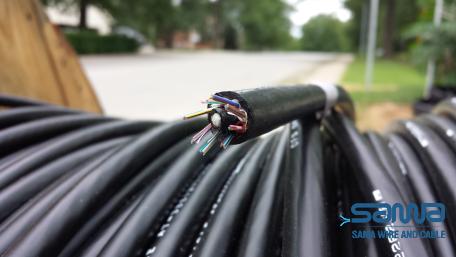
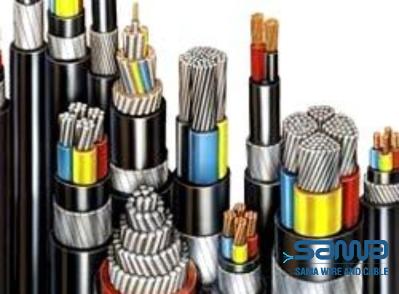
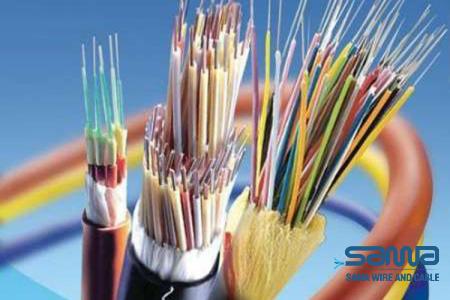
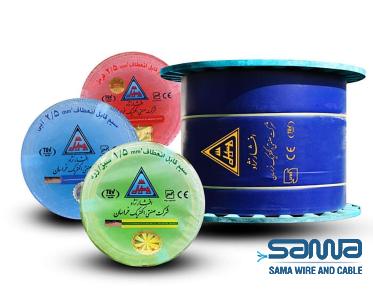
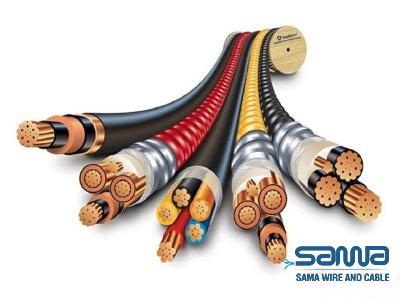
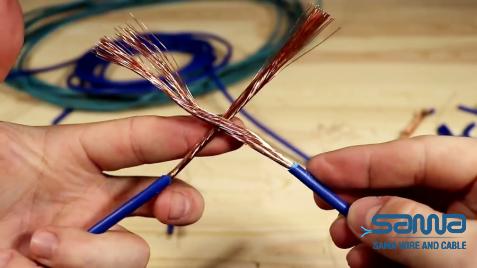
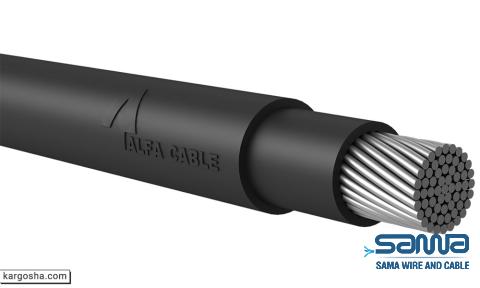
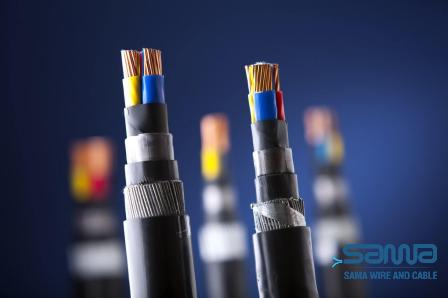
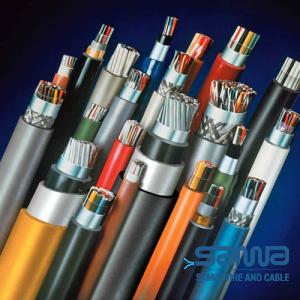
Your comment submitted.